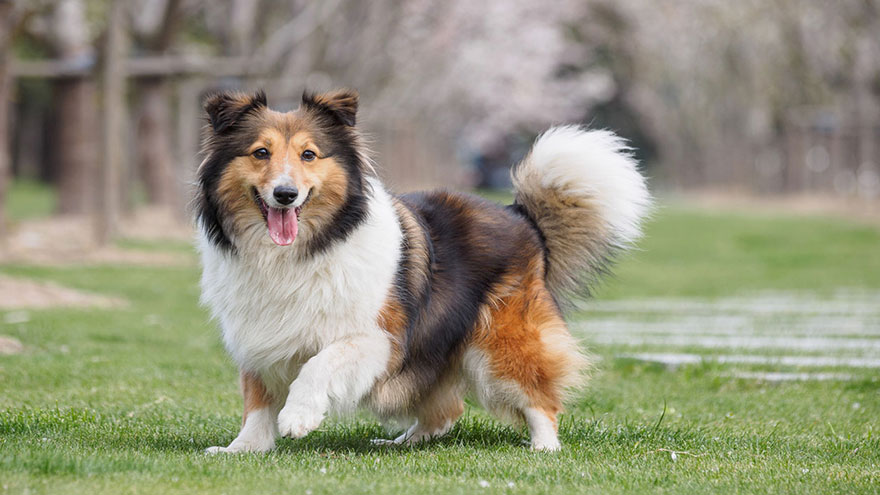Shetland Sheepdog Health Guide
One of the key things that new owners should remember about caring for a Shetland Sheepdog (Sheltie) is that this dog may gain excess weight from overeating if given too much food.
Some experts warn that commercial foods may have instructions on the package that recommend larger amounts for meals than are actually healthy for some dogs.
Health Problems in the Shetland Sheepdog
In feeding the Sheltie, it may be best to serve fresh foods, similar to those the owner buys for the family. Consulting with a veterinarian or continuing the diet started by the breeder are recommended as good places to begin. Some dog breeds also have allergies to the grain content of lower-priced commercial foods as well.
The Shetland Sheepdog will generally remain a healthy dog with the proper diet and exercise. But this breed does have some unique health conditions that should be understood. The Sheltie may develop problems and diseases of the eye. In fact, Sheltie Eye Syndrome can affect the breed.
This condition, similar to Collie Eye Anomaly, is inherited and usually affects both eyes. The disease can affect all layers of the eyeball, with mild cases causing blind spots and severe cases leading to blindness. A test called fundoscopy may be able to detect this condition as early as six weeks of age. New owners should ask about this condition when talking with the breeder and with their veterinarian.
The Sheltie may develop a condition known as dermatomyositis, a connecting tissue disease with inflammation of the skin and muscles. This condition may become evident as thinning patches on the head or other places on the dog’s body. The cause is not generally known, but may be a viral infection or a reaction in the autoimmune system.

Though it is inherited, dermatomyositis in the Sheltie skips a generation. Breeders can keep track of this condition through clear bloodline records, so it is highly recommended that prospective owners visit with three or more top breeders when selecting a puppy.
The Shetland Sheepdog may also be prone to dislocated kneecap or luxating patella. This occurs when natural ridges in the bone of the kneecap are not prominent enough to keep the kneecap from jumping out of the grooves that are meant to hold it in place.
The kneecap will sometimes move back into place after a few minutes but is likely to move out again with exercise. Surgery is often the only method that will stop this from occurring again. Consulting with a veterinarian is recommended for this and any other possible health conditions for the Shetland Sheepdog.
Other conditions that may occur in the Sheltie are von Willebrand’s Disease (and some other bleeding disorders), Lupus, hip dysplasia and skin diseases. With all of these conditions it is highly recommended that you work only with a reputable breeder who acknowledges the possibility of Shetland Sheepdog health problems. These top breeders will work to eliminate the problems through selective breeder and will be open to discussion as you shop for your puppy.
One of the things that new owners should keep in mind with the Sheltie is that size varies, even within the same litter. A dog’s height is not necessarily an indication that the dog is healthy or unhealthy.
As most experts will state, a Sheltie is a Sheltie, regardless of size. One of the key ways to ensure that the new pet will be a Sheltie of something close to an average size is to work with a breeder who has kept good records and used only healthy parents that were not extremely small or extremely large.
With proper nutrition and care, the Sheltie should provide a family with 12 to 15 years of love and enjoyment.
Read More About Shetland Sheepdog
- Shetland Sheepdog Breed Information
- Shetland Sheepdog : 10 Most Common Questions
- Shetland Sheepdog Training Guide
- Owning A Shetland Sheepdog : Breeder Recommendations

